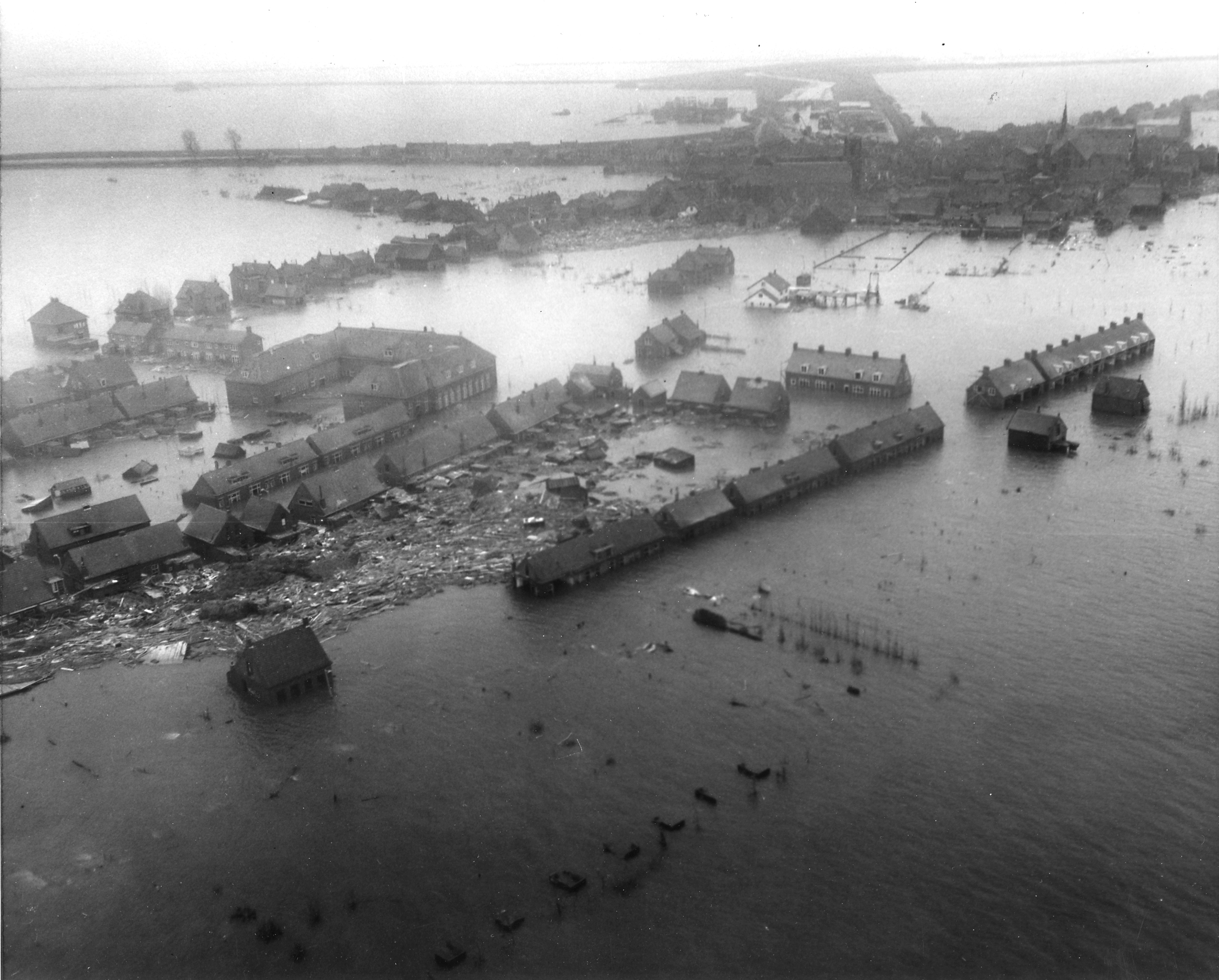The Somerset Levels have had enough of boats
 |
| Burrowbridge in the Somerset Levels has been onderwater more than a month |
BRIDGWATER
"Netherlands, help us," is what you hear in the English county of Somerset. The inhabitants have had enough of the water. Politicians say: let nature run its course.
FROM OUR CORRESPONDENT PATRICK VAN IJZENDOORN
"What? You come from Holland? That's great news. We really need you." In the pouring rain, Heather Stewart-Monteith (fifty-something) points at the sandbags intended to keep the rising water out. Her home is on the Somerset Levels, a picturesque polder area in the West of England that has been largely under water since New Year's Day. Brown water. Inhabitants like Stuart Montes have had as much as they can take. "Our government wants to let nature take its course, but they seem to forget that people live here as well as geese and water voles."
Willem Frederik Hermans typified Great Britain once as a half-flooded mountain range in the North Sea, but during this wettest winter since time immemorial, large areas of the kingdom have disappeared completely underwater, especially in the south. No area is worst hit than the Somerset Levels, where they have been fighting the water since the Middle Ages, when the abbeys of Glastonbury and Athelney were founded.
This battle seemed to have been won four centuries ago after intervention by Dutch engineers, but after two huge floods within 14 months, the water seems to be back on top.
An area of more than 80 km² has been underwater for weeks, including 40 houses. The village of Munchelney with its 195 inhabitants has only been accessible by boat since then. Last week the Minister of Agriculture and the Environment came to take a look, but he seemed more worried about getting mud on his shiny shoes. David Cameron sent the army to the flooded area, but the inhabitants have more need of the navy. The Environment Agency, similar to the Dutch Rijkswaterstaat, decided to install extra pumps after taking time to think about it. Now they pump away a million cubic litres of water a day.
Standing by a pump along the silted up River Parrett, the local MP Ian Riddell Grainger lets fly when the Environment Agency comes up. "I only have good things to say about the staff out in the countryside. They are lions, but they are led by superfluous asses. It's amazing that this pumping station still exists. The former director of the Agency once said that she wanted to blow up all the pumping stations here in order to give the area back to nature."
 |
| 94% of the farmland is underwater |
Riddell Grainger, a descendant of Queen Victoria and number 309 in the line to the British throne, is now hoping for Dutch help. "You are under sea level and have had just as much rain as we have, but without floods. And that's why I have asked Dutch politicians, civil servants and engineers about help with dredging. We even have an offer. Your dredging techniques are superior to and cheaper than what our Agency has in mind. Money is not the problem. The bunny huggers have invested £31 million in a bird reservations. They think that's more exciting than dredging."
The Conservative politician with his Wellington boots and flat cap enjoys widespread support in his constituency, for instance from the Councillor Julian Taylor, who has a sign in his garden with the text
"please dredge our river". His farm is called Orchard View, but what he can see from his window now is largely a frighteningly full ditch. The situation is dear to the heart of this retired university professor. He devotedly describes the history of the Somerset Levels and his recent visit to the Cruquius Museum in the Haarlemmermeer. "The pumping engine we saw there turned out to have been built in Cornwall. And now we need your equipment. How ironic.
"Reclaimed land needs maintenance. That's obvious, but try explaining it to our politicians. They are now even cutting the budget on water control. The beds of our rivers are four metres higher now than they were in the 1950s," Taylor explains."Dredging is the answer now, followed by the installation of flood barriers, because with talking about the highest tidal difference in the world bar one." His wife Mary nods in agreement and points at the adverse effects of the present policy to go back to nature. "Last week two deer were walking around here up to their bellies in water looking for a dry spot. Is that really animal friendly?"
In the background, is the lack of understanding between city-dwellers and country folk. The latter often blame city people for regarding the countryside as a nature reserve, with the farmers and other inhabitants as foolish nuisances. An example is the £600,000, half of it from Brussels, spent by the government every year teaching farmers about water management. "That's typical," says Stuart-Monteith, who left London 12 years ago for Somerset. "Most farming families have been here for generations and know exactly what has to happen: dredging. They were even allowed to dredge their own ditches in olden days. Not any more. Because of the water vole."
 |
| It's difficult to spell |
Dutch water management
The Somerset Levels is one of the areas where Cornelis Vermuyden (1595-1677) left his traces. This hydraulic engineer from Zeeland introduced modern engineering techniques. He drained the Fens, repaired a broken dike along the Thames and reclaimed the gardens of Windsor Castle. King Charles I sent Sir Cornelis, by then a naturalised Englishman, to the Somerset Levels, but the drainage work was delayed by the Civil War. He is buried in Westminster and is commemorated with a window in Ely Cathedral.


















